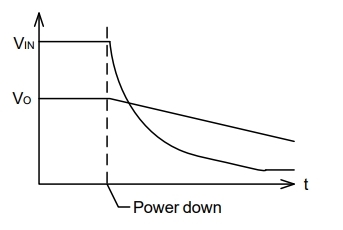Hi
This device does not have a reverse protection such as VIN < VOUT. However as is often the case, Vin will be go down under Vout during it is in Vin shutdown.
When it is at the above case, Vout > Vin + 0.3V (e.g. it is for 50ms) Is there any concerns? Or it is not allowed because Vout is over Abs Max ratings?
(This is just example)
In the case of customer board, after power down, Vout= Vin +0.38V for 50ms.
If the differences is about 0.3V, I think the body diode of internal FET is not turned on.
If the body diode is not turned on, the reverse current does not flow the body diode.
Regards,
Koji Hamamoto



